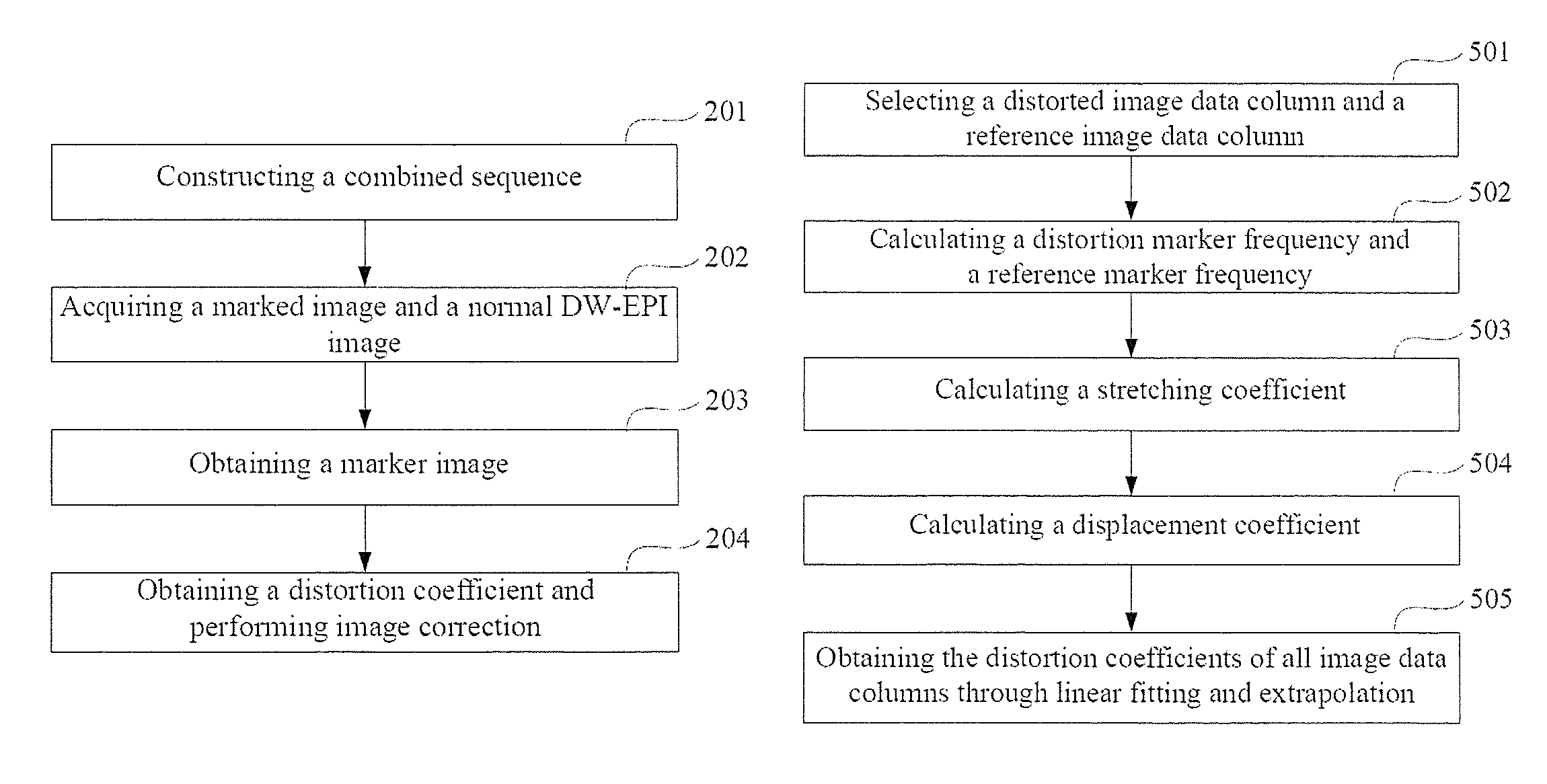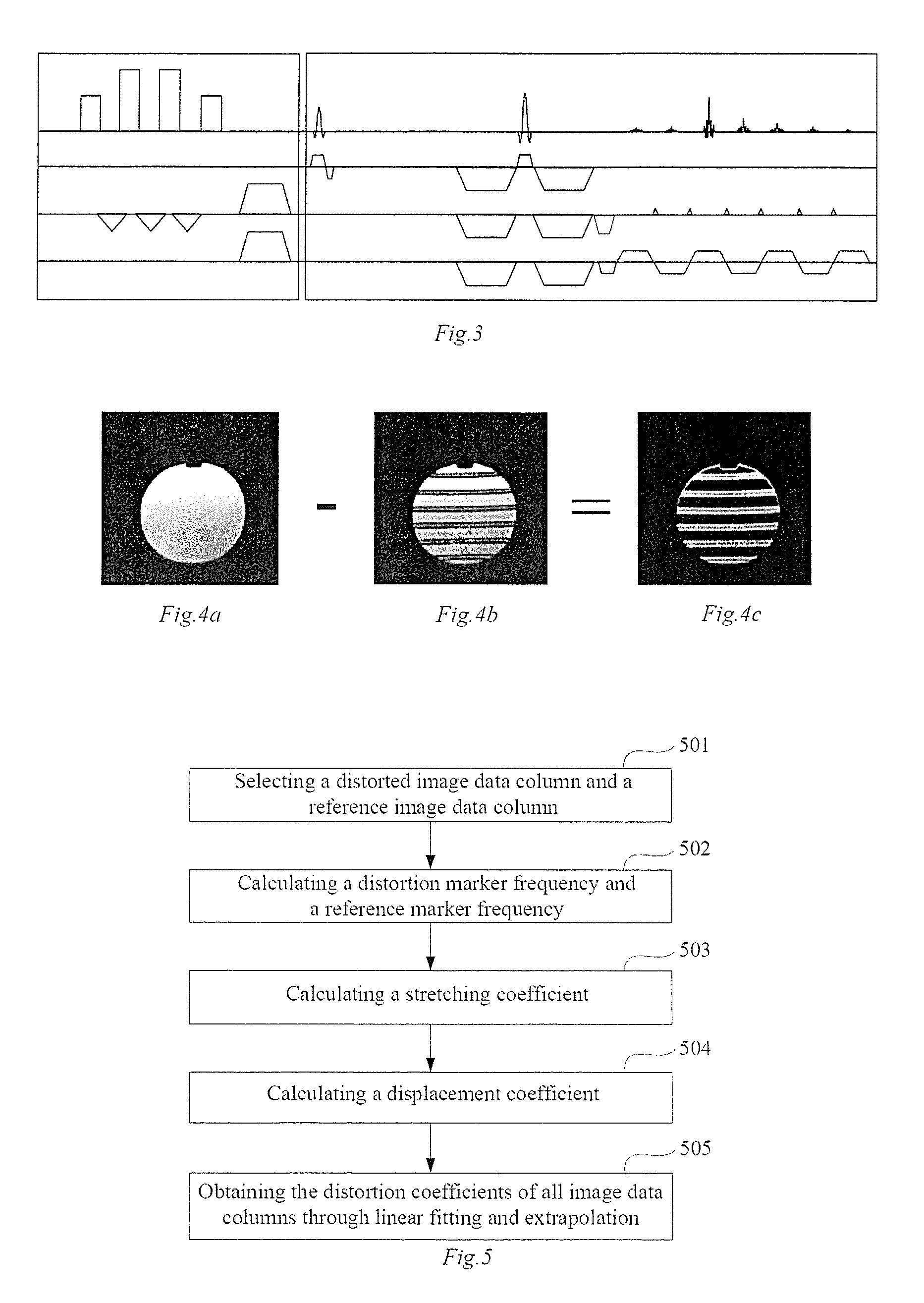Method for correcting image distortion and system, and magnetic resonance imaging equipment
a magnetic resonance imaging and image distortion technology, applied in the field of magnetic resonance imaging (mri), can solve the problems of image distortion, high imaging speed of epi sequence, easy to be affected by various artifacts, etc., and achieve the effect of effectively correcting image distortion and simplifying the whole calculation process
- Summary
- Abstract
- Description
- Claims
- Application Information
AI Technical Summary
Benefits of technology
Problems solved by technology
Method used
Image
Examples
example i
[0136]The particular imaging parameters of DW-EPI imaging are: 1.5T magnetic resonance imager, TE / TR=127 / 500 msec; bandwidth: 1000 Hz; field of view (FoV): 200×200 mm; imaging matrix: 128×128; layer thickness: 1; average passes: 4; the b values used in diffusion imaging are respectively: 0, 500, 1000; diffusion mode: orthogonal; and diffusion method: single polarity.
[0137]Most of the particular imaging parameters of a marked image are the same as those of a DW-EPI image, except that the average pass is 1.
[0138]FIGS. 9a to 9g show schematic diagrams of distortion correction for an image with b=1000. FIG. 9a is an image with b=0; FIGS. 9b to 9d are images with b=1000 in three different diffusion directions; FIG. 9b is an image in the direction of phase coding, FIG. 9c is an image in the direction of readout, and FIG. 9d is an image in the slice selective direction. FIGS. 9e to 9g are images after correction in each diffusion direction in FIGS. 9b to 9d respectively, wherein FIG. 9e is...
example ii
[0142]The particular imaging parameters of DW-EPI imaging are: 3T magnetic resonance imager, TE / TR=108 / 5900 msec; bandwidth: 1040 Hz; field of view (FoV): 235×235 mm; imaging matrix: 192×192; layer thickness: 25; average passes: 4; the b values used in diffusion image are respectively: 0, 1000; diffusion mode: orthogonal; and diffusion method: single polarity.
[0143]Most of the particular imaging parameters of a marked image are the same as those of a DW-EPI image, except that the average pass is 1.
[0144]FIGS. 12a to 12g show results of distortion correction for an image with b=1000. FIG. 12a is an image with b=0; FIGS. 12b to 12d are images with b=1000 in three different diffusion directions; FIG. 12b is an image in the direction of phase coding, FIG. 12c is an image in the direction of readout, and FIG. 12d is an image in the slice selective direction. FIGS. 12e to 12g are images after correction in each diffusion direction in FIGS. 12b to 12d respectively, wherein FIG. 12e is an i...
PUM
 Login to View More
Login to View More Abstract
Description
Claims
Application Information
 Login to View More
Login to View More - R&D
- Intellectual Property
- Life Sciences
- Materials
- Tech Scout
- Unparalleled Data Quality
- Higher Quality Content
- 60% Fewer Hallucinations
Browse by: Latest US Patents, China's latest patents, Technical Efficacy Thesaurus, Application Domain, Technology Topic, Popular Technical Reports.
© 2025 PatSnap. All rights reserved.Legal|Privacy policy|Modern Slavery Act Transparency Statement|Sitemap|About US| Contact US: help@patsnap.com



